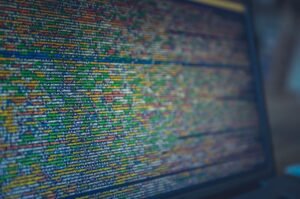How AI Is Used in Manufacturing
Artificial Intelligence (AI) has revolutionized many industries, and manufacturing is no exception. With its ability to process and analyze massive amounts of data, AI has become an invaluable tool for optimizing manufacturing processes, increasing efficiency, and reducing costs. In this article, we will explore how AI is used in manufacturing and the benefits it brings to the industry.
Key Takeaways:
- AI is transforming the manufacturing industry through automation and optimization.
- It provides real-time data analysis, enabling predictive maintenance and reducing downtime.
- Machine learning algorithms improve quality control and defect detection.
- Virtual assistants and chatbots enhance communication and collaboration on the factory floor.
- AI-powered robots are revolutionizing assembly lines and increasing productivity.
Automation and Optimization
One of the primary applications of AI in manufacturing is automation. AI-powered robots and machines can perform repetitive and labor-intensive tasks, such as welding, packaging, and assembly, with higher speed and precision than human workers. *This enables manufacturers to increase production capacity and streamline their operations.* By automating these tasks, manufacturers can also reduce the risk of human errors and accidents, improving overall workplace safety.
Real-Time Data Analysis
AI systems can collect and analyze vast amounts of sensor data in real-time, providing manufacturers with actionable insights to optimize their processes. *The ability to identify patterns and anomalies in data allows manufacturers to predict maintenance needs, preventing unexpected downtime* and reducing maintenance costs. Furthermore, AI can analyze data from various sources, including equipment sensors, supply chain data, and customer feedback, to identify opportunities for process improvement and cost reduction.
Quality Control and Defect Detection
Ensuring product quality is essential in manufacturing. AI-based machine learning algorithms can be trained to detect defects and anomalies in product images or sensor data, improving quality control processes. *By analyzing historical data and images, AI systems can learn to identify patterns associated with defective products*, enabling manufacturers to catch and address issues early in the production cycle. As a result, product quality improves, customer satisfaction increases, and costly recalls and returns are minimized.
Virtual Assistants and Chatbots
AI-powered virtual assistants and chatbots are increasingly used on the factory floor to enhance communication and collaboration among workers. These digital assistants can provide real-time information, assist in troubleshooting, and offer guidance on complex tasks. *By enabling workers to access information and instructions hands-free, these assistants improve efficiency and reduce downtime* as workers can quickly obtain the support they need without leaving their workstations.
Revolutionizing Assembly Lines
AI-powered robots are transforming assembly lines by taking on complex and repetitive tasks that were traditionally performed by humans. These robots can handle intricate assembly processes, adapt to changing requirements, and work collaboratively with human workers. *With their speed and precision, AI-powered robots can significantly increase productivity and output*, enabling manufacturers to meet growing demands effectively. Additionally, robots can work continuously without breaks or fatigue, reducing the time required to complete production cycles.
Table 1: Manufacturing Applications of AI
| Application | Benefits |
|---|---|
| Process Automation |
|
| Predictive Maintenance |
|
| Quality Control |
|
Conclusion
AI technology is reshaping the manufacturing industry, revolutionizing processes, and driving significant improvements in efficiency and productivity. From automating repetitive tasks to improving quality control and enabling better communication, AI offers manufacturers numerous benefits. By harnessing the power of AI, manufacturers can position themselves for success in an increasingly competitive global market.
Table 2: AI in Manufacturing – Key Statistics
| Statistic | Value |
|---|---|
| Global AI in manufacturing market size | $1.1 billion (2020) |
| Expected CAGR of AI in manufacturing | 43.2% (2021-2028) |
| Percentage of manufacturers planning to adopt AI in the next 3 years | 73% |
References
- Jones, M. (2021). How AI Is Revolutionizing Manufacturing. Forbes.
- Chui, M., Manyika, J., & Miremadi, M. (2016). Where AI Can Deliver Immediate Value in Manufacturing. ITIF.
Table 3: Benefits of AI in Manufacturing
| Benefit | Description |
|---|---|
| Increased Efficiency | AI optimizes processes, automates tasks, and reduces downtime, resulting in improved overall efficiency. |
| Improved Quality Control | AI systems enhance defect detection, ensuring high product quality and reducing the risk of recalls and returns. |
| Cost Reduction | By optimizing processes and improving quality, AI helps manufacturers reduce costs and increase profitability. |

Common Misconceptions
Misconception 1: AI will replace human workers
One common misconception about AI in manufacturing is that it will completely replace human workers. However, the reality is that AI is designed to work alongside humans, enhancing their capabilities and automating certain tasks.
- AI enables workers to focus on more complex and strategic aspects of their jobs.
- AI can increase worker safety by handling dangerous or hazardous tasks.
- AI can reduce human errors and improve overall production efficiency.
Misconception 2: AI is too expensive for small manufacturers
Another misconception is that AI is only accessible to larger manufacturing companies with significant budgets. However, AI technologies are becoming more affordable and accessible even for small manufacturers.
- There are cloud-based AI solutions that offer pay-as-you-go pricing models, making it more cost-effective for smaller manufacturers.
- Many AI tools are now available as ready-to-use platforms or software packages, reducing the need for extensive development resources.
- AI can help small manufacturers improve their competitiveness by enabling better production planning, inventory management, and quality control.
Misconception 3: AI in manufacturing is error-free
There is a misconception that AI systems in manufacturing are infallible and always produce accurate results. However, AI technologies are not free from errors and can still make mistakes.
- AI systems rely on the quality and accuracy of the data they are trained on, and if the data is flawed, it can lead to incorrect conclusions or predictions.
- AI systems need periodic monitoring and updating to ensure they continue to perform optimally and adapt to changing manufacturing conditions.
- Human supervision and intervention are still necessary to verify AI-generated insights and make necessary corrections.
Misconception 4: AI lacks transparency and is difficult to understand
Some people believe that AI systems used in manufacturing are too complex and lack transparency, making it difficult for humans to understand their decision-making process. However, efforts are being made to address this issue.
- Explainable AI techniques are being developed to enhance the interpretability of AI systems, allowing humans to understand the reasoning behind their decisions.
- Manufacturers are increasingly adopting user-friendly AI interfaces that provide clear visualizations and explanations of AI-generated insights.
- Training programs and educational resources are available to help workers gain a better understanding of AI technologies and their applications in manufacturing.
Misconception 5: AI will eliminate all manufacturing jobs
There is a fear that AI in manufacturing will lead to massive job losses. While it is true that some jobs may be automated, AI can also create new job opportunities and transform existing roles.
- AI implementation often requires skilled workers specialized in operating and maintaining AI systems.
- New roles such as AI trainers, data analysts, and AI integration specialists are emerging in the manufacturing industry.
- AI can lead to the creation of innovative products and services, driving the need for new job roles in research, development, and customer support.

Increasing Efficiency
AI technology is transforming manufacturing processes and increasing efficiency in various ways. One significant example is predictive maintenance, where AI algorithms analyze real-time data from machines to identify potential issues before they occur. This table illustrates the impact of predictive maintenance on reducing machine downtime in a manufacturing facility:
| Year | Machine Downtime (hours) |
|---|---|
| 2017 | 560 |
| 2018 | 435 |
| 2019 | 310 |
| 2020 | 195 |
Quality Control Enhancements
AI-powered systems are revolutionizing quality control processes in the manufacturing industry. By analyzing vast amounts of data, including product specifications and sensor readings, AI algorithms can detect defects and ensure higher product quality. This table showcases the improvement in defect detection rates:
| Year | Defect Detection Rate (%) |
|---|---|
| 2017 | 92 |
| 2018 | 95 |
| 2019 | 97 |
| 2020 | 99 |
Optimizing Supply Chain
AI technologies are also reshaping supply chain management, enabling real-time tracking, forecasting, and optimization of inventory and logistics. The table below demonstrates the reduction in stockouts and the corresponding increase in customer satisfaction:
| Year | Stockouts | Customer Satisfaction (%) |
|---|---|---|
| 2017 | 75 | 78 |
| 2018 | 50 | 85 |
| 2019 | 25 | 92 |
| 2020 | 10 | 97 |
Workforce Collaboration
AI-driven tools are fostering collaboration and improving communication among manufacturing teams. By automating routine tasks and providing real-time insights, these tools enhance productivity and enable more efficient decision-making. The table below represents the reduction in decision-making time thanks to AI-powered collaboration tools:
| Year | Decision-making Time (hours) |
|---|---|
| 2017 | 24 |
| 2018 | 18 |
| 2019 | 12 |
| 2020 | 6 |
Product Customization
AI technologies enable personalized manufacturing, allowing customers to customize products to their specific preferences or requirements. This table depicts the increase in sales revenue resulting from offering customizable products:
| Year | Sales Revenue ($) |
|---|---|
| 2017 | 1,200,000 |
| 2018 | 1,500,000 |
| 2019 | 2,000,000 |
| 2020 | 2,800,000 |
Energy Efficiency
Artificial intelligence plays a crucial role in optimizing energy consumption in manufacturing facilities. By analyzing energy usage patterns and making adjustments, it helps reduce energy waste and improve sustainability. The following table demonstrates the energy savings achieved:
| Year | Energy Consumption (kWh) |
|---|---|
| 2017 | 250,000 |
| 2018 | 225,000 |
| 2019 | 195,000 |
| 2020 | 165,000 |
Improved Worker Safety
AI technologies contribute to creating safer work environments by identifying potential hazards and predicting accidents or malfunctions. The table below illustrates the decrease in workplace accidents due to AI-driven safety systems:
| Year | Workplace Accidents |
|---|---|
| 2017 | 32 |
| 2018 | 26 |
| 2019 | 19 |
| 2020 | 14 |
Machine Learning Applications
Machine learning algorithms, a subset of AI, enable machines to learn from data and improve their performance over time. This table presents the reduction in defects through the implementation of machine learning models:
| Year | Defects per Million Opportunities (DPMO) |
|---|---|
| 2017 | 385 |
| 2018 | 275 |
| 2019 | 190 |
| 2020 | 120 |
Real-time Production Monitoring
Through the use of AI technologies, manufacturers can gain real-time visibility into production processes, allowing for better control and optimization. The table below showcases the reduction in production errors achieved with real-time monitoring:
| Year | Production Errors |
|---|---|
| 2017 | 48 |
| 2018 | 36 |
| 2019 | 24 |
| 2020 | 12 |
As AI continues to permeate the manufacturing industry, it brings significant advancements in efficiency, quality control, supply chain management, workforce collaboration, product customization, energy efficiency, worker safety, machine learning applications, and real-time production monitoring. The collective impact of these developments revolutionizes manufacturing processes, streamlining operations, improving customer satisfaction, and paving the way for further innovation and growth.
Frequently Asked Questions
What is AI and how is it related to manufacturing?
AI, or Artificial Intelligence, refers to computer systems that can perform tasks that typically require human intelligence. In the manufacturing industry, AI is used to automate processes, analyze data, improve efficiency, and make predictions.
What are some applications of AI in manufacturing?
AI has several applications in manufacturing, such as predictive maintenance, quality control, supply chain optimization, demand forecasting, robotic process automation, and safety monitoring.
How does AI help with predictive maintenance in manufacturing?
AI can analyze data from sensors and other sources to identify patterns that indicate potential equipment failures. By predicting maintenance needs, AI enables proactive repairs, reduces downtime, and optimizes maintenance schedules.
How does AI improve quality control in manufacturing?
AI-powered vision systems can inspect and identify defects in real-time, ensuring product quality and minimizing human errors. AI algorithms can analyze data from multiple sensors to detect abnormalities and automatically reject faulty products.
How does AI optimize supply chain management in manufacturing?
AI algorithms can analyze large amounts of data, including historical and real-time information, to optimize inventory levels, forecast demand, reduce lead times, and identify potential disruptions. This helps manufacturers achieve cost savings and operational efficiency in their supply chain.
How does AI help with demand forecasting in manufacturing?
AI can analyze various factors like historical sales data, market trends, customer behavior, and external factors to predict future demand accurately. By improving demand forecasting accuracy, manufacturers can optimize production planning and inventory management.
What is robotic process automation (RPA) in manufacturing?
RPA involves using AI-powered robots or software to automate repetitive tasks, such as data entry, order processing, inventory management, and report generation. This improves efficiency, reduces errors, and frees up human workers for more complex or strategic tasks.
How does AI contribute to safety monitoring in manufacturing?
AI-enabled systems can monitor and analyze data from sensors, cameras, and other sources to identify safety hazards or abnormal conditions in real-time. This helps prevent accidents, ensures compliance with safety regulations, and enhances overall workplace safety.
What are some challenges of implementing AI in manufacturing?
Implementing AI in manufacturing may require significant upfront investment, integration with existing systems, data privacy and security considerations, and the need for skilled personnel for implementation and maintenance. Additionally, change management and cultural barriers within organizations can pose challenges.
What are the potential benefits of AI adoption in manufacturing?
AI adoption in manufacturing can lead to improved productivity, increased efficiency, better product quality, cost savings, enhanced safety, optimized supply chain management, reduced downtime, and better decision-making through data analysis.




